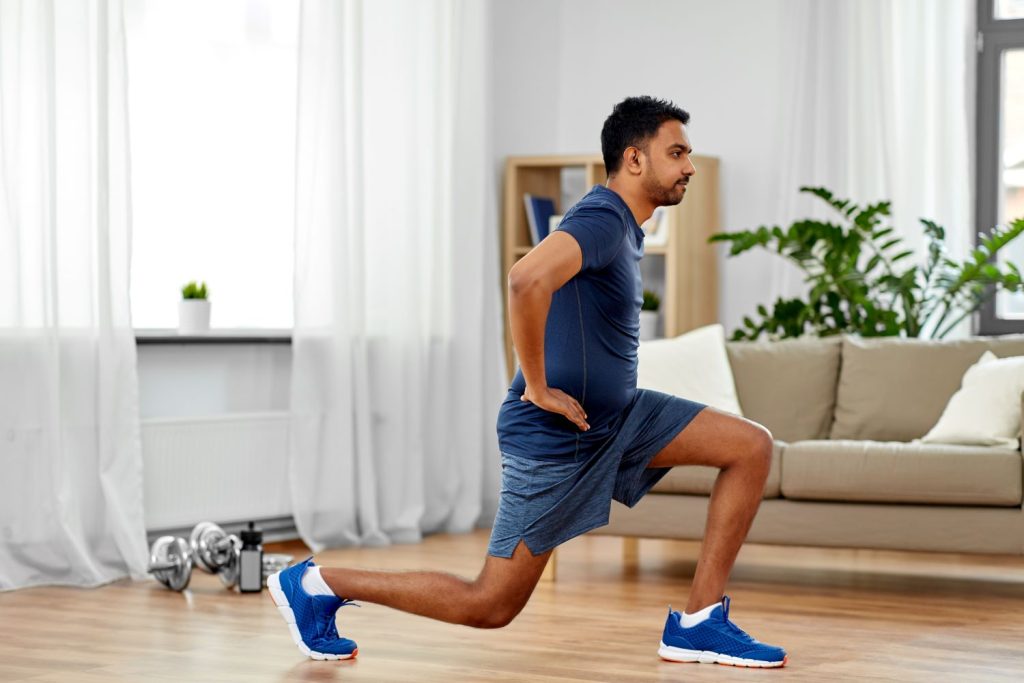
Your Secret Weapon Against Back Pain
Have you ever experienced lower back pain? It’s a common issue that affects people of all ages and lifestyles. However, did you know that weak glutes, or butt muscles, could be one of the underlying causes of your back pain? Most people are familiar with the idea that core strength is essential for preventing back pain, but not nearly as many understand the critical role that the glute muscles play in supporting the lower back and maintaining proper alignment of the pelvis and hips. When the glutes are weak, the body compensates by overusing other muscles, such as the lower back and hip flexors, which can lead to imbalances and eventually back pain.
In recent years, there has been a growing awareness of the importance of glute strength for overall health and fitness. Fitness professionals and physical therapists are increasingly emphasizing the need for exercises that specifically target the glutes to improve posture, reduce pain, and prevent injury.
What Are the Glutes?
The glutes are a group of three muscles located in the buttocks: the gluteus maximus, gluteus medius, and gluteus minimus. The gluteus maximus is the largest and strongest of the three muscles, and is responsible for hip rotation and extension, or moving your thigh away from the front of your body, such as when you move your leg backward or stand up from a seated position. The gluteus medius and minimus are located on the side of the hip and are responsible for hip rotation and abduction, or moving your leg away from your body.
How Do My Glutes Support My Back?
Your glutes play a crucial role in supporting your back. The gluteus maximus is attached to the iliotibial band (IT band), which runs from the hip to the knee, and the thoracolumbar fascia, which runs along the back and torso. Both are important connective tissues that support your lower back. Weakness in the gluteus maximus can cause tension in these tissues, leading to lower back pain.
Additionally, the glutes help stabilize the pelvis and hips. If the glutes are weak, other muscles in the lower back and hips must compensate for their lack of strength, leading to overuse and strain on those muscles. This can also cause lower back pain.
Strengthening the glutes can also improve overall body mechanics, making it easier to perform daily activities without strain or pain, like climbing the stairs, unloading the dishwasher, and carrying a child. By improving posture and alignment, glute strength can also reduce the risk of future injuries and chronic pain.

What Are Some Exercises I Can Do to Strengthen My Glutes?
To prevent back pain, it’s essential to incorporate a variety of exercises that target the glutes, core, and other muscles that support the lower back. In addition to squats, exercises like lunges, glute bridges, and step-ups can all be effective for strengthening the glutes and preventing back pain.
These exercises can be done without any equipment and can easily be incorporated into your daily routine. For example, you can do glute bridges before getting out of bed in the morning, chair squats during commercial breaks while watching TV, and walking lunges while walking around the house or during a break at work.
Incorporating these exercises into your daily life or workout routine can help strengthen your glutes and prevent back pain. However, it’s essential to ensure proper form when performing these exercises to avoid injury. Start with light weights and gradually increase the intensity as your strength improves.
Chair Squat
Stand in front of a chair with your feet shoulder-width apart. Slowly lower yourself down into a squat, keeping your knees in line with your toes, until you’re almost touching the chair. Then, push through your heels and stand back up. Repeat for 10-15 reps.
Glute Bridge
Lie on your back with your knees bent and feet flat on the ground. Squeeze your glutes and lift your hips up towards the ceiling, while keeping your shoulders on the ground. Hold for a few seconds and then slowly lower your hips back down to the ground. Repeat for 10-15 reps.
Step-ups
Step-ups are a functional exercise that simulates daily activities, such as climbing stairs or stepping up onto a curb. Stand in front of a step or bench and step up onto it with one foot. Push through your heel to stand up on the step, then step back down with the same foot. Repeat for 10-15 reps on one leg, then switch to the other leg.
Walking Lunges
If your knees are in good shape, lunges are terrific glute strengtheners! Stand with your feet hip-width apart. Take a step forward with your right foot and lower your body down until your front knee is bent at a 90-degree angle, and your back knee is almost touching the ground. Push through your front heel to stand back up and bring your back foot forward to step into a lunge with your left leg. Alternate between right and left legs for 10-15 reps.
Simple Life Hacks
There are a couple of easy changes you can make to your day that will strengthen your glutes. For example, try taking the stairs instead of the elevator, or stand up and sit down in a chair without using your hands. These little daily habit changes can make a big difference in strengthening your glutes and preventing back pain.
The Bottom Line:
Glute strength is crucial to prevent back pain. The glutes play an essential role in supporting the lower back and maintaining proper alignment of the pelvis and hips. Weak glutes can lead to imbalances and overuse of other muscles, causing lower back pain. Incorporating exercises into your daily life will not only reduce your risk of back pain, but also reduce injury, improve posture, and increase endurance.